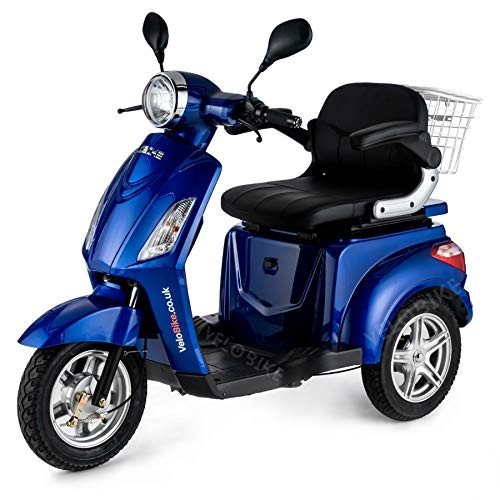3 Common Reasons Why Your Mobility Scooters Isn't Working (And How To Fix It)

Mobility Scooters: A Comprehensive Guide
Mobility scooters have become a necessary mode of transport for numerous individuals dealing with mobility challenges. This article checks out the numerous facets of mobility scooters, including their types, advantages, functions, and a guide for potential buyers.
Comprehending Mobility Scooters
Mobility scooters are electrically powered devices developed for individuals with minimal mobility. They supply a method of transportation for individuals who might have trouble strolling however still want to retain their independence. They are available in different designs and features to deal with a large range of needs.
Types of Mobility Scooters
Mobility scooters can typically be classified into three primary types:
| Type | Description | Best For |
|---|---|---|
| Compact Scooters | These are small and lightweight, ideal for inside your home and short journeys. | Users with restricted storage area or those who travel typically. |
| Mid-size Scooters | A balance in between mobility and stability, ideal for both indoor and outside usage. | Those who require to cover a range of surfaces. |
| Heavy-duty Scooters | Large and robust, designed for rugged outside usage and much heavier individuals. | Users needing extra weight capacity or going off-road. |
Secret Features of Mobility Scooters
The option of mobility scooter frequently depends upon the features that align with private needs. Here are some of the essential features to consider:
- Weight Capacity: Mobility scooters feature various weight limitations. It is crucial to choose a scooter that can effectively support the user's weight.
- Variety: The distance a scooter can take a trip on a single charge differs. Depending on user requirements, one may go with scooters with a variety of up to 40 miles.
- Speed: Most mobility scooters can reach speeds between 4 to 8 mph. Consider what speed is comfortable and safe for the desired environment.
- Turning Radius: A compact turning radius is essential for indoor use, permitting much easier navigation in tight spaces.
- Battery Type: The type of batteries utilized can impact the scooter's performance. Lead-acid and lithium-ion batteries are the most typical.
Benefits of Using Mobility Scooters
The advantages of mobility scooters extend beyond just transport. Some key advantages consist of:
- Independence: Users can navigate their environment without depending on caregivers, promoting independence and self-esteem.
- Health Benefits: Using a scooter can motivate outdoor activity, leading to physical and psychological health enhancements by decreasing feelings of seclusion.
- Convenience: Scooters can easily be operated in various environments, whether inside your home, in shopping malls, or outdoors.
Essential Considerations When Buying a Mobility Scooter
When buying a mobility scooter, several factors to consider can help ensure that you select the ideal model:
Assess Individual Needs:
- Mobility level: Consider how much help the individual will require.
- Variety of use: Determine where the scooter will mostly be utilized (indoors, outdoors, on rough terrains, etc).
Test Drive:
- Always test drive several designs to discover an ideal fit. Pay attention to convenience, ease of steering, and the scooter's responsiveness.
Evaluation Safety Features:
- Look for scooters with sufficient safety features like lights, signs, and anti-tip designs.
Examine Warranty and Service Options:
- A reputable warranty and readily available service alternatives are crucial for long-term usage.
Frequently Asked Questions about Mobility Scooters
1. How quick do mobility scooters go?Mobility scooters generally have speeds ranging from 4 to 8 mph, with most developed for security instead of high-speed travel. 2. Exist weight constraints on mobility scooters?Yes, mobility
scooters come with specific weight limits, typically ranging from
250 pounds to over 500 pounds, depending on the design. 3. Can mobility scooters be used indoors?Certain designs, particularly compact scooters, are particularly developed for
indoor usage and are easier to steer in tight areas. 4. How often do the batteries need to be replaced?Battery life can differ based upon use, but normally, with correct care, batteries may last between 1 to 3 years before needing replacement
. 5. Are mobility scooters covered by insurance?Coverage can vary, but some insurance strategies, including Medicare and Medicaid, might cover part of the expense. It's suggested to consult private insurance coverage suppliers. Mobility scooters work as a
valuable tool for many people, allowing them to keep
their flexibility and independence. By understanding the various types and features of mobility scooters, individuals can make informed choices tailored to their particular requirements.
Whether used for errands, mingling, or leisurely activities, mobility scooters can enhance the lifestyle for those with mobility restrictions. Buying shop mobility scooters is a choice that can substantially affect an individual's every day life. Therefore, individuals ought to thoroughly evaluate their options and choose a model that best aligns with their way of life and mobility requirements
.

